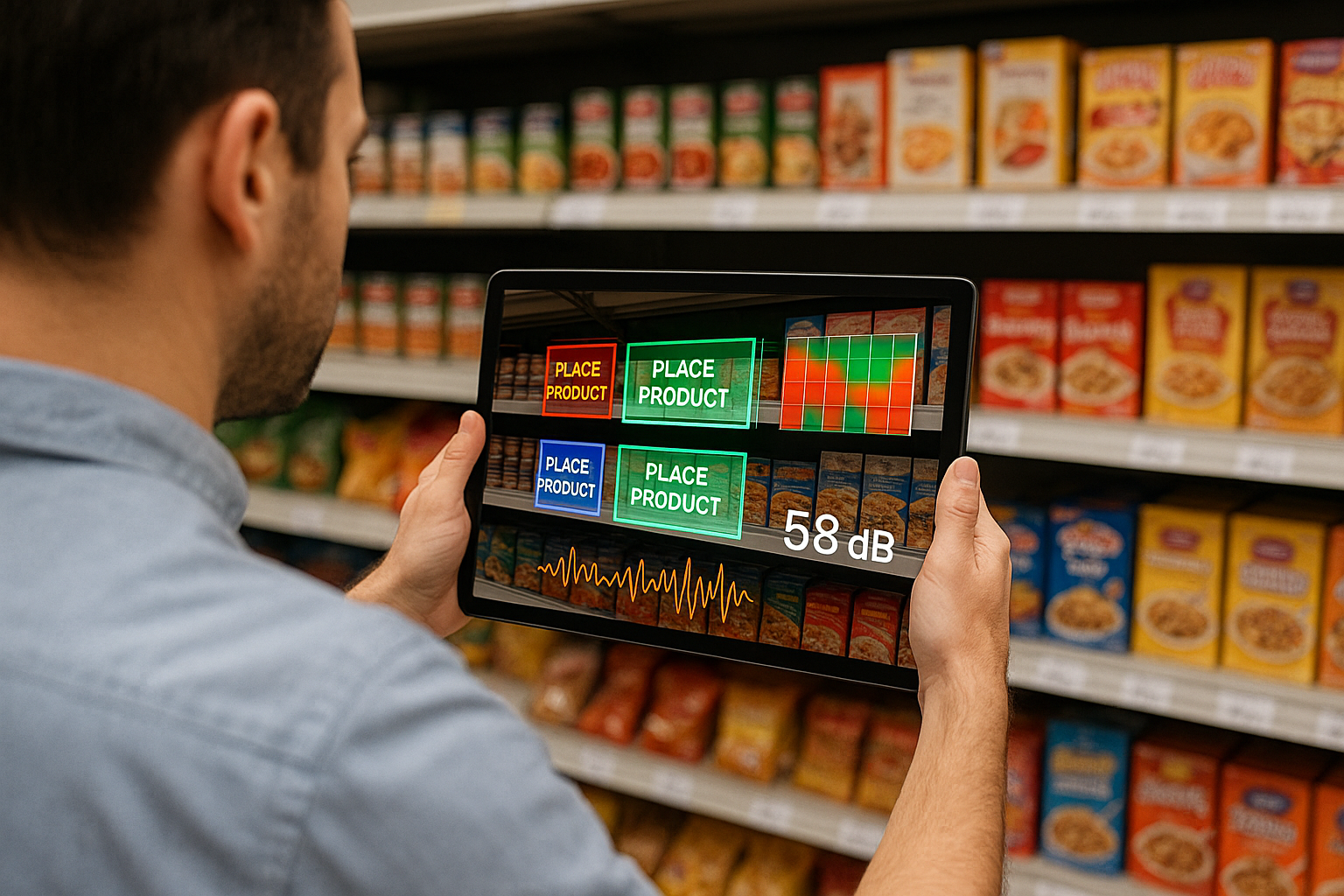What’s new in AR this month? In August 2025, AR-powered shelf planning hit a milestone as multiple global retailers, including Carrefour and Target, expanded pilot programs using spatially-aware AR for real-time planogram validation. These systems, integrated directly into handheld devices and AR glasses, can now dynamically adjust layouts based on inventory, traffic flow, and shopper behavior—all without disrupting store operations. The latest version of NVIDIA’s Omniverse Retail Simulator also rolled out, providing predictive shelf simulations powered by AI and AR.
The Retail Shelf Planning Challenge
Retail shelf planning is a deceptively complex task. Decisions about where to place products affect visibility, impulse buys, sales velocity, and even customer satisfaction. Traditionally, planograms—visual diagrams showing product placement—are developed by merchandising teams and then implemented manually by in-store workers. But static plans struggle to adapt to dynamic realities like stockouts, customer traffic changes, or evolving product assortments.
This is where AR enters the equation. Augmented reality enables real-time visualization, correction, and optimization of shelf layouts, giving retailers a powerful tool to enhance execution precision and operational agility.
How AR Is Changing Shelf Management in 2025
1. Real-Time Planogram Validation
Store staff wearing AR glasses or using tablet apps can view the digital planogram overlaid directly on physical shelves. Deviations—like misplaced SKUs or empty slots—are highlighted in real time, reducing human error and ensuring plan compliance across locations.
2. Dynamic Shelf Optimization
Using AR and AI together, systems can now suggest optimal product rearrangements based on heat maps, purchase patterns, and foot traffic data. AR overlays simulate these new layouts in-place, allowing quick comparison of alternatives before implementation.
3. Inventory Accuracy and Auto-Replenishment
Smart shelves integrated with AR interfaces help identify low stock levels. Employees can walk the aisles and receive real-time restocking prompts, reducing out-of-stock instances. In some advanced stores, AR even visualizes backroom inventory paths for faster retrieval.
4. AR Training for Merchandisers
New hires and third-party merchandisers can follow step-by-step AR guides during shelf stocking. This reduces onboarding time and standardizes execution quality across teams and locations, especially in high-volume seasonal rollouts.
5. Spatial Data Collection and Pattern Detection
Every AR interaction is also a data point. Retailers can now aggregate spatial usage patterns: which aisles require more frequent correction, how long shelf compliance takes, and where optimization yields the most value.
Quick Facts
- Reduction in Errors: Retailers using AR validation tools reported 41% fewer planogram compliance issues compared to manual audits.
- Time Saved: AR reduced shelf setup time by 27% during new product launches in Q2 2025.
- Sales Uplift: Optimized AR-driven layouts led to a 9% average increase in front-of-shelf product sales.
Case Study: AR Shelf Planning in Grocery Chains
One European supermarket chain piloted AR shelf planning across 50 locations. Using spatial mapping and real-time feedback, store managers could verify layout compliance and instantly correct issues. Over six months, the chain saw:
- 30% drop in restocking time
- 22% improvement in promotional product visibility
- Reduced reliance on printed documentation by 100%
Moreover, regional managers could monitor store layout execution remotely, improving oversight without needing on-site visits.
Best Practices for AR Shelf Planning
- Start with Core Categories: Focus on high-impact categories like beverages, snacks, or health & beauty first—where shelf presence matters most.
- Use Mixed Reality Devices: Combine AR tablets with head-mounted displays to support different workflows across staff levels.
- Integrate Inventory Systems: Sync AR tools with live stock databases to enable predictive alerts and auto-suggestions.
- Train with Gamified AR Modules: Boost team adoption with engaging simulations and progress tracking for shelf setup tasks.
- Analyze Spatial Heatmaps: Use the AR system’s spatial analytics to iteratively improve planogram effectiveness store-wide.
Future Outlook: Toward Fully Autonomous Shelf Management
The next phase of retail AR isn’t just visual—it’s autonomous. Robotic shelf scanners paired with AR dashboards will soon handle nightly compliance checks, alerting staff only when human intervention is required. Combined with generative AI, layouts will be customized per store demographics, creating hyperlocal product arrangements with measurable uplift.
By 2026, analysts expect 40% of large-format retail chains in North America and Europe to use some form of AR in shelf management—either for setup, auditing, or optimization. As margins tighten and retail competition intensifies, this will shift from innovation to necessity.
Looking Ahead
- Expect more integration with wearables—AR shelf alerts via smartwatches or audio cues.
- Cross-channel data fusion will allow AR to recommend shelf plans that reflect both online trends and local in-store behavior.
- Retailers will begin using AR-generated 3D layouts as digital twins for testing promotions and signage effectiveness before going live.
Key Takeaways
- AR in retail shelf planning improves layout precision, speeds up execution, and enables data-driven decision making.
- It bridges the gap between merchandising intent and in-store reality—helping retailers stay agile and shopper-centric.
- As AR hardware becomes more affordable and AR software more intelligent, adoption will spread beyond big-box chains into mid-market retailers and franchises.




